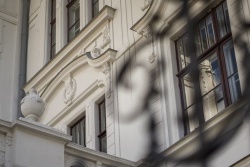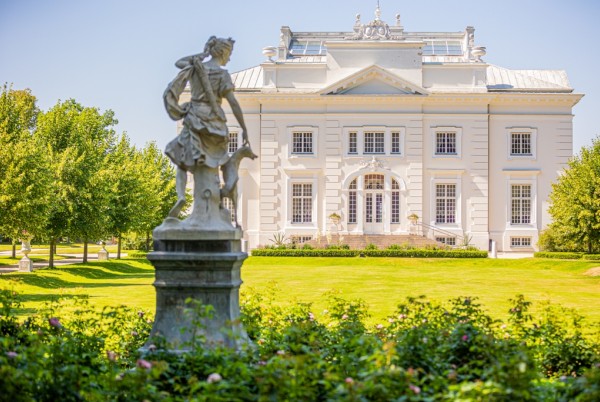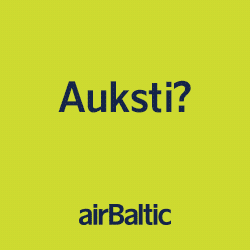Pan-Baltic summary highlights
Celotajs.lv | 2021.11.12
The Pan-Baltic hiking hiking conference on November 9, 2021 gathered 170 Zoom participants from Latvia, Lithuania, Estonia, Finland, Denmark, Sweeden, Georgia, Italy, Austria, Netherlands, Norway, Poland, Serbia, Slovenia and USA. The participants ware mainly tourism professionals from non-governmental organizations, tourism information centers and travel agencies.
The conference consisted of the following blocks:

Jūgendstils Liepājā
Dodies pastaigā, un apskati skaisto jūgendstils arhitektūru.
Liepājas reģiona TIB
• key presentations introducing the main present hiking tourism trends the Baltic States, Sweden and Norway;
• Baltic panel presentations and discussions sharing the long distance hiking trail implementation experiences from Estonia, Lithuania and Latvia;
• participants poll.
Conference keynote presentations highlited the following main trends:
Trends in the Baltic States:
• There is growing interest in hiking and outdoors.
• Good prospects for further hiking tourism development.
Trends in Sweden:
• National trail management framework is under development: criteria for good quality of hiking trail infrastructure and information, legal issues, insurance, arrangements with private land owners, training, etc.
Trends in Norway:
• Heavily increasing visitor numbers in popular nature attraction sites.
• Visitor management challenges in popular nature attraction sites turned into local employment opportunities.
• Transfer of mass demand from mountain hiking to easier accessible hiking routes closer to cities.
Baltic discussion panel marked the following issues and opportunities:
• New hikers’profile is observed - interested in good quality food and accommodation services combined with hiking activities. Hiker’s attitude changes from „nature is for free, I am not paying for any services” to „I deserve a nice room with a shower and a culinary experience after a good hike”.
• Hiking tourism is a great opportunity to prolong the tourism season, but it is still a challenge to adjust the demand and supply sides. Good examples already exist with food service providers keeping their businesses open in off-season because of hiking tourists on the Baltic Coastal Trail. At the same time, at large scale, it is still not easy to break the myth about hiking tourists as not spending money on local services.
• The „Hikers-friendly” label operating in all three Baltic States stimulates competition among local service providers and improvement of the overall service level.
• Cooperation framework with private land owners defining rights and responsibilities is needed to avoid confrontation.
• Trail infrastructure – toilets, waste management, etc. – shall be sufficiently supplied along with the growing visitor numbers to safeguard nature sustainability and avoid overtourism.
• Vandalism and damaging of the trail infrastructure, especially trail marking signs, is a problem in some parts of the long distance trails.
• The question is still open about funding for coordination, management and maintenance of hiking trails. EU project funding might be available for new developments, but not for the maintenance of the existing infrastructure.
Participants poll:
The conference participants were asked to give their opinion on four questions regarding further development of long distance hiking trails in the Baltic States. With nearly 50 respondents, the opinions are as follows:
1. What kind of organisation could assume the role of further hiking trail management in EE/LV/LT?
49 respondents
- NGO 29%
- private commercial organisation 8%
- public organisation (state, municipalities) 39%
- one of the existing organisations 18%
- other 6%
1. What could be the financing model and funding sources for such organisation (multiple choice)?
47 respondents
- membership and donations 17%
- EU project funding 32%
- public funding from state institutions, e.g., LVM, RMK, environmental agencies? 40%
- commercial services 11%
- combined funding 68%
2. Do local businesses gain any benefits from hiking tourists?
40 respondents
- no, they do not buy services (1 day hikes or overnighting outdoors, free of charge) 3%
- yes, they buy services (accommodation, food, etc.) 43%
- potentially yes, but there are not enough services on hiking trails 55%
3. What is added value from hiking tourism (multiple choice)?
50 respondents
- improved outdoor infrastructure and services 68%
- relevant organisations manage the trails and inform the society 24%
- hiking culture improves and being outdoor gains popularity 78%
- other 8%
In summary:
The majority of respondents regard that the role of further hiking trail management should be assumed by a public organisation (state, municipality), while the funding should come from combined sources – public funding, EU project funding, organisation memberships and commercial services. The poll respondents recognise that hiking tourists bring income as they buy services, still there is undersupply of services on the hiking trails in the Baltic States. According to the poll respondents, hiking tourism brings such added values as improvement of the hiking culture and increased popularity of outdoor holidays, as well as improvement of outdoor infrastructure and services.
Overall conclusions:
1. Quality of hiking experiences and services is the forthcoming task for developers of hiking tourism in the Baltic States.
2. Management of overtourism in popular nature attraction sites shall be considered along with increasing hiking tourism.
3. Everymen’s right to roam and private lands – a unified strategy and approach in EU countries is required.

Explore Trakai through unique gastronomic
At Balttour 2025, Trakai Tourism Information Centre will present the latest tourist routes and the planned events, which anyone visiting Lithuania should attend!
Trakai TIC

